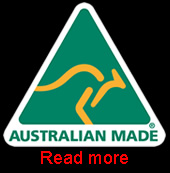Corona Virus (COVID-19)
ViralFX™ can be used as a general disinfectant/anti-viral agent for animal housing and vehicle transport ONLY.
ViralFX™ is NOT indicated for use IN TREATING infections of COVID-19, African Swine Flu, etc.
Given below is some general info on COVID-19 and care to be taken by the staff employed in the poultry farms, live stock and animal housing etc.
Confirmed case decontamination and sanitisation protocol.
Coronavirus (COVID-19) is a respiratory illness caused by a new virus. Symptoms range from a mild cough to pneumonia.
Initial Recommendations:
- Persons who have symptoms of acute respiratory illness are recommended to stay home and not come to work until they are free of fever (100.4° F [37.8° C] or greater using an oral thermometer), signs of a fever, and any other symptoms for at least 24 hours, without the use of fever-reducing or other symptom-altering medicines (e.g. cough suppressants). Employees should notify their supervisor and stay home if they are sick.
- Place posters that encourage staying home when sick, cough and sneeze etiquette, and hand hygiene at the entrance to your workplace and in other workplace areas where they are likely to be seen.
- Provide tissues and no-touch disposal receptacles for use by employees.
- Instruct employees to clean their hands often with an alcohol-based hand sanitizer that contains at least 60-95% alcohol or wash their hands with soap and water for at least 20 seconds. Soap and water should be used preferentially if hands are visibly dirty.
- Provide soap and water and alcohol-based hand rubs in the workplace. Ensure that adequate supplies are maintained. Place hand rubs in multiple locations or in conference rooms to encourage hand hygiene.
What happens in a confirmed case of COVID-19?
Should a member of your staff that has been present in your establishment test positive for the Corona Virus (COVID-19) the following steps are recommended for your establishment.
Isolation
- If they are seriously unwell and it is an emergency, call 000 immediately.
- Continue to keep the suspected infected person isolated (e.g. in a different room).
- Wear a surgical mask if you have one and ask, they also wear one.
- Call your local public health unit on 1300 066 055, they will assess the situation and advise on what to do next.
- If you can’t contact the public health unit, see a doctor, preferably at a hospital emergency department, as soon as possible.
- Phone the emergency department before attending so they can make arrangements for when you arrive to prevent spread of infection to others.
- Do not travel on public transport, use taxis or ride-shares and do not attend any public places.
Step One: Assessment and Notification
- Identify the passage of access used by the person.
- Identify the areas within the establishment that the affected person has travelled.
- Vacate those areas and ensure they are kept free from all who may enter.
- Advise all other personnel within the establishment of the positive test and advise they:
- Immediately wash their hands with a soap product for 20 seconds or more.
- Use a sanitiser type lotion on their hands.
- Apply a mask and leave the establishment until further notice.
Step Two: Passage of travel - Front Door, Lobby, Foyer, Lift, Stairs, Reception, Etc.
- All loose items in the affected area to be sealed into plastic bags and placed in an area for further processing.
- Refer to “Loose Item Sanitising”.
- Apply an approved Antibacterial disinfectant by way of Mist or Fog to ensure adhesion of chemical to all applicable surfaces.
- Allow the chemical to adhere and disinfect all surfaces for a period of 30 minutes.
- Perform a detailed hand application of Antibacterial disinfectant ensuring all horizontal surfaces are wiped down prior to use.
- All cleaning equipment used is secured in biohazardous plastic bags and disposed at an approved medical waste facility.

Step Three:
Desk, Office Space, Meeting rooms, Hallways, Lifts, Stairways, Etc.
- All loose items in the affected area to be sealed into plastic bags and placed in an area for further processing.
- Refer to “Loose Item Sanitising”.
- Apply an Antibacterial disinfectant by way of Mist or Fog to ensure adhesion of chemical to all applicable surfaces.
- Allow the chemical to adhere and disinfect all surfaces for a period of 30 minutes.
- Perform a detailed hand application of Antibacterial disinfectant ensuring all horizontal surfaces are wiped down prior to use.
- Carpeted areas are to be steam cleaned using an Antibacterial chemical agent.
- Hard Floor areas are to be fogged using an Antibacterial chemical agent and rinsed prior to use.
- All cleaning equipment used is secured in biohazardous plastic bags and disposed at an approved medical waste facility
Step Four: Kitchens, Food Prep, Break Out, Etc.
The area is to be reviewed and the appropriate level of decontamination applied. The assessment will review and advise which cupboards, draws, joinery items, fridges, dishwashers, microwaves and other items/areas require a full decontamination or a surface clean if the areas have remained sealed from the affected persons.
- All loose items in the affected area to be sealed into plastic bags and placed in an area for further processing.
- Refer to “Loose Item Sanitising”
- Apply an approved Antibacterial disinfectant by way of Mist or Fog to ensure adhesion of chemical to all applicable surfaces.
- Allow the chemical to adhere and disinfect all surfaces for a period of 30 minutes.
- Perform a detailed hand application of Antibacterial disinfectant ensuring all horizontal surfaces are wiped down prior to use.
- All cleaning equipment used is secured in biohazardous plastic bags and disposed at an approved medical waste facility.
Note*** All solutions used are certified as “Food Preparation Area Safe”.
Step Five: Toilets, End Of trip Facilities, Showers, Wet Areas, Etc.
Due to the confined space of a wet area and the nature of its use it is highly recommended that the entire area be decontaminated and sanitised rather than assessing the affected area.
- All loose items in the affected are to be sealed into plastic bags and placed in an area for further processing.
- Refer to “Loose Item Sanitising”
- Apply an approved Antibacterial disinfectant by way of Mist or Fog to ensure adhesion of chemical to all applicable surfaces.
- Allow the chemical to adhere and disinfect all surfaces for a period of 30 minutes.
- Perform a detailed hand application of Antibacterial disinfectant ensuring all horizontal surfaces are wiped down prior to use.
- All cleaning equipment used is secured in biohazardous plastic bags and disposed at an approved medical waste facility.
Loose Item Sanitising Process
The following process is to be conducted in 2 adjoining rooms or closely located (if closely located the passage of travel is to be decontaminated as per “Passage of Travel” process)
- All items with-in the area of the affected persons travel are to be collected, placed into sealed plastic bags and stored in an area or room separate from the affected area.
- Each technician will handle a single bag of items and remove a single item at a time for decontamination and sanitising.
- Upon removing a single item, it is to be detail hand wiped using Antibacterial disinfectant and then taken to the second room and placed on plastic film for 30 Minutes.
- After 30 minutes the items are to be hand detail cleaned using Antimicrobial solution.
- The items can then be placed back into the original environment.
*** Note. - Computers and other Electrical Equipment will require the use of an alcohol based chemical agent to limit the chance of electrocution or future equipment damage.
- Paper products and or items are not suitable for decontamination so disposal of these is required. (All disposed of items will be recorded by way of photograph, documented and then disposed of at a medical waste facility)
Other areas may require Decontamination and Sanitisation, the protocol can be amended to suit any area upon assessment.








